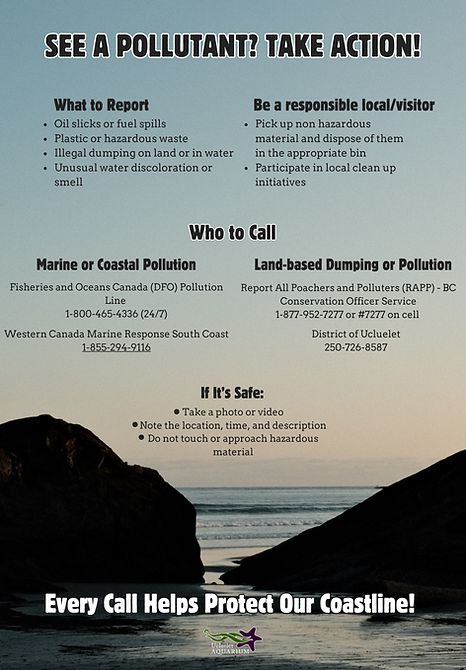top of page
We are CLOSED until March 1, 2026!
Thank you for all your support during the 2025 season!





“We are here to share joy and knowledge about local species and habitats through storytelling and hands-on interactions. We greet visitors from all over the world treating them to a very personal view of the fish and invertebrates from our waters in Clayoquot and Barkley Sounds.”

LOCATED ON THE TRADITIONAL TERRITORY OF THE
YUUŁUʔIŁʔATḤ – UCLUELET FIRST NATION.
IN CASE OF AN EMERGENCY


bottom of page




